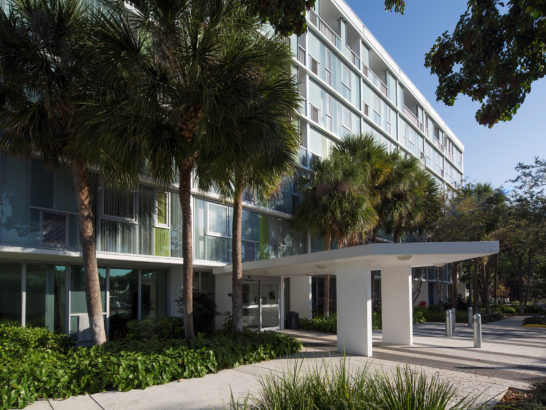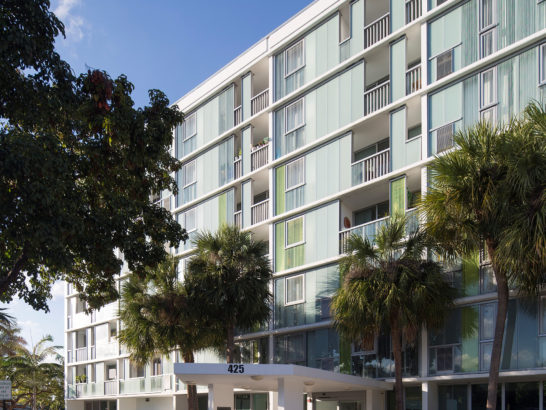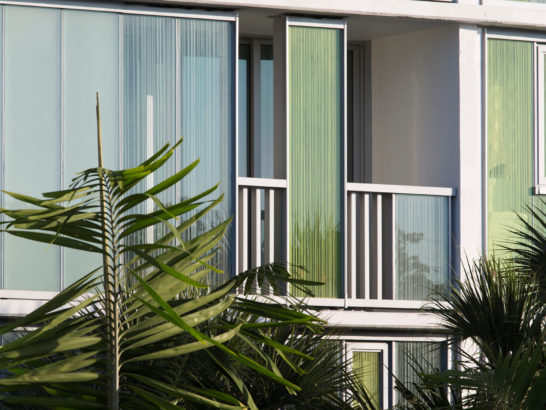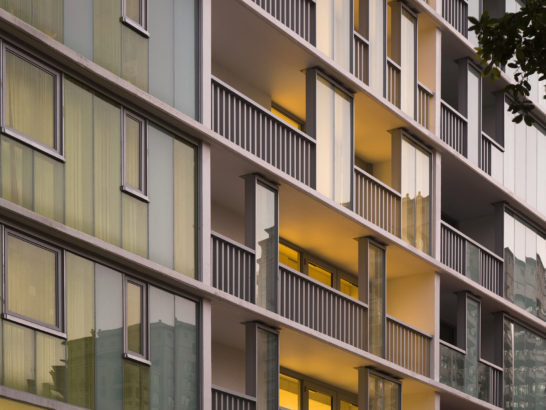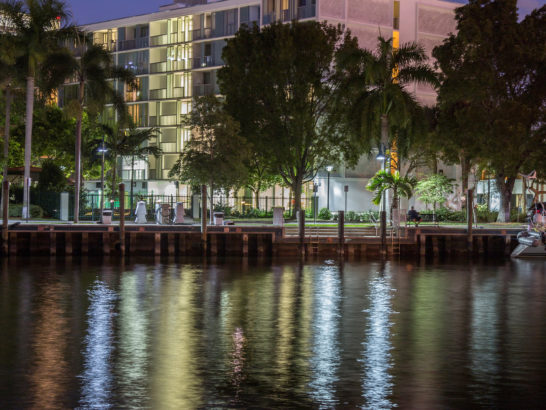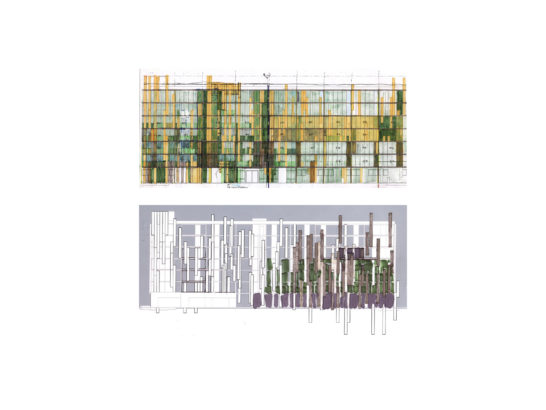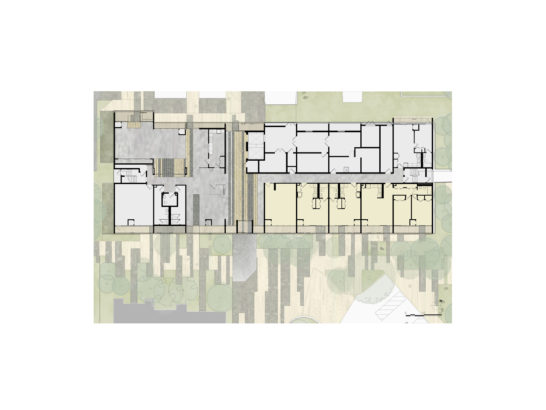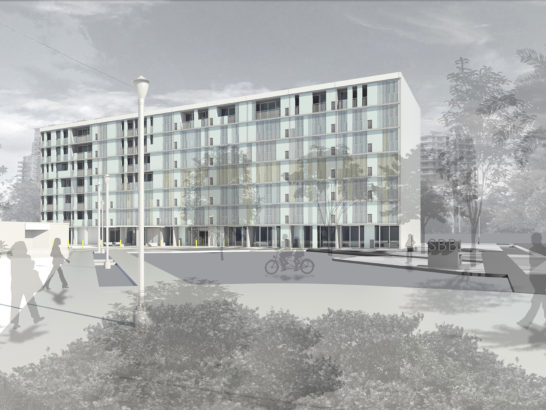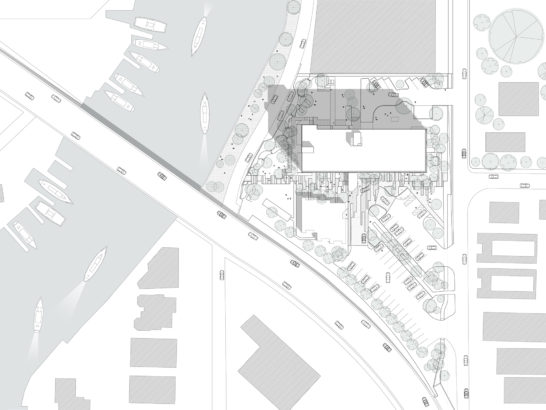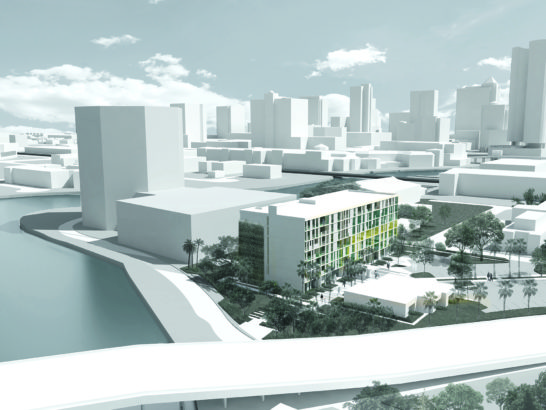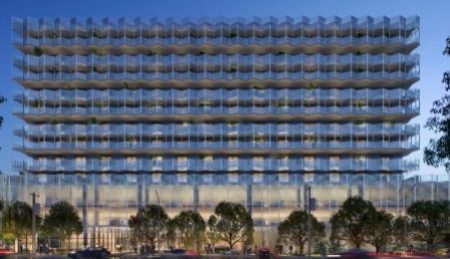-
Description
Sailboat Bend was originally built in 1971 and designed by Hecky/Yee Consulting Architects + Angelo P. Lucio, Architect. Spanning 76,500 square feet, this residence consists of efficiency units, one, two bedroom units, and a community room to comply with UFAS and ADA requirements. The seven-story, 105-unit affordable housing for seniors, was to be transformed into an exceptional living environment on the New River in downtown Fort Lauderdale, with walkable, sustainable, and connected spaces for the residents. The project explores the intersection of several major renovation elements: the existing concrete grid modules of the bedroom units, the new applied curtain wall and storefront systems and the exterior plaza/community gardens. The building envelope and the horizontal ground plane elements established a new, applied, and colorful lightweight grid on the project inspired by landscape, light, and views. These primary elements are altered, adjusted, and maintained on both the north and south facades. Within these grid systems an array of options for views, solar orientation, energy efficiencies, and layers of three-dimensional manipulation of the perimeter enclosure are explored. The site plan and building façade merge with a repetitive 20-foot module expressed in the concrete surface of the plaza and the glass facades. This module represents an integration of inside and outside spaces with the interpenetration of lines and planes and the ebb and flow of spatial connections made in and through the native landscape and interior ground floor of the building. The project program stipulates an increase in 50 percent of one-bedroom units, which was required to be taken from modifying the façade of existing balconies to enclose or partially enclose balconies as well as an overall improvement to the envelope. The project explores the expansion of view and landscape as part of the value experience as well as the intrinsic qualitative balance between space and height in the downtown area. The value proposition was to enable all units to have equal value, with lower units having more space, higher units having more expansive views, some units having larger balconies, locations on north and south, intimate versus expansive, etc. These became vehicles for exploring the positive qualities of the site. The façade reiterates the horizontal repetition of elements folding expressively into the vertical plane, connecting the existing exterior landscape. Landscape is incorporated into the visual scrim of the building as an abstract line and as a lush, physical experience in the provision of two major park areas on the southeast corner and the northwest sides of the site, along with a promenade linking the east and west in the new plaza on the south side. A virtual landscape is embedded in the ceramic frit pattern in the glass which provides additional shade and a greater level of privacy. Each unit has a unique view. Common areas on the ground floor are provided with places for gathering and community activities. The project site is conveniently located in an emerging walkable downtown neighborhood: to the north, the Riverwalk; to the west, the Broward Center for the Performing Arts and the Museum of Discovery and Science; to the southwest, public transportation connections. Important east-west and north-south connectivity on the ground plane is opened to link the residents to the community at large and transit, and to integrate the public housing project into downtown Fort Lauderdale. Photography by Robin Hill.
-
Gallery
-
Related Projects

